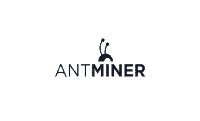Bitcoin Mining Calculator
A Bitcoin mining calculator allows you to determine how much you can profit from a certain Bitcoin miner. It takes into account all relevant costs, such as hardware, electricity, and fees.
| Difficulty Factor | |
| Hash Rate | |
| BTC/USD Exchange Rate | |
| BTC/Block Reward | |
| Pool Fees % | |
| Hardware Cost (USD) | |
| Power (Watts) | |
| Power Cost (USD/kWh) |
Bitcoin Mining Calculator Summary
- Enter the hash rate of your Bitcoin mining hardware (mandatory).
- Enter additional optional information, such as pool fees, electricity costs, etc. The more information you enter, the more accurate the result will be.
- Results will be displayed automatically in USD (to see the detailed calculation, click “Show Details”).
- Some values (e.g., the exchange rate) are updated automatically with the latest network stats. However, you can adjust any value manually to simulate possible scenarios.
For a detailed explanation of each part of the calculator, keep on reading. Here’s what I’ll cover:
- Calculating Bitcoin Mining Profitability
- Frequently Asked Questions
- Conclusion: A Bitcoin Mining Calculator Predicts the Future
1. Calculating Bitcoin Mining Profitability
Bitcoin mining secures the Bitcoin network. Without miners, there would be no one to update Bitcoin’s ledger, which is known as the blockchain. The more miners you have, the more decentralized and secure the network is. Due to miners’ crucial role in the network, an incentive system was designed so that miners would be compensated for providing their services.
Each block mined by miners contains a block reward—a fixed amount of Bitcoins that are paid out to the miner that mined the block.
While mining today is very competitive, it’s possible to run a successful and profitable mining operation. Let’s outline the many factors that will determine whether or not your mining operation will be profitable.
Hardware Costs



The up-front cost of mining hardware is usually the largest expense for any new mining operation. Just like good computers cost more money, good mining hardware is expensive. There are three main mining hardware manufacturers today that supply miners on the market.
When purchasing mining hardware, you will want to look at a miner’s hash rate measured in Terra Hash (Th/s). A higher hash rate means a more powerful miner.
Miners also generate heat and need to be supplied with electricity. Unless you already have the needed parts, you will likely need to purchase cooling fans and power supplies. Make sure to take these into account and add them to the “hardware cost” section of the calculator.
Hardware Efficiency
Hash power alone is not enough to determine the quality of a miner. Similar to the way cars are rated by their MPG (miles per gallon), miners are valued by how many Bitcoins they yield according to the electricity they consume.
The reason for that is that miners use massive amounts of electricity, and electricity costs money. In short, you want a miner that has a high hash rate and uses the provided electricity efficiently.
W/Gh (watts per gigahash) is the metric used to display a miner’s efficiency. The lower this number, the more efficient the miner.
Electricity Costs
Electricity costs can make or break a mining operation. A huge monthly electric bill means significant costs on top of the up-front cost of the hardware.
China’s cheap electricity is one of the reasons why nearly 60% of Bitcoin’s network hashing power is located there. In the United States, for example, most mining hardware is run in Washington State, where power costs are relatively cheap thanks to hydroelectricity. Venezuela’s crisis and the cheap electricity resulting from it have made Bitcoin mining extremely profitable there.
Electric costs for cooling are yet another factor to consider, as miners generate significant heat during the mining process. Insufficient cooling may impair your mining operation or even lead to irreparable damage to the hardware. However, there are ways to harness this by-product to your advantage.
Creative miners in cold areas can use the heat generated by miners to heat their houses in the winter. If the heat generated by miners will partly replace your normal heating costs, it can be another way to save money and improve your chances of profitability.
Additionally, miners in cold areas also have an advantage because they may not need to use extra fans to cool the hardware.
Mining Difficulty and Network Hash Power
In order to keep Bitcoin’s inflation in check, as more miners join the network, the difficulty is raised, i.e., it gets harder to mine. This ensures that Bitcoin blocks are mined, on average, every 10 minutes. In other words, a higher difficulty is indicative of more hash power on the network (i.e. more or stronger miners are at work).
Mining revenue is based partially on the current difficulty to mine Bitcoins. Difficulty can (and will) change. Stay alert to advances in mining technology and efficiency to get a better idea of how the network’s hash rate and difficulty may look down the line. From past experience, it usually goes up as time goes by (on average 0.4% per day).
Bitcoin Price
Bitcoin’s price is extremely volatile and can’t be predicted. Mining Revenue is shown in USD based on the exchange rate at the time of calculation.
This means, you may calculate your profitability today with a Bitcoin price of X and experience a price drop to Y a day afterward that will significantly affect your profitability. In short, be prepared for price movements and understand that Bitcoin’s price is a factor that you cannot control.
Block Reward
Unlike Bitcoin’s price, the Bitcoin block reward is predictable: every four years (or 210,000 blocks to be exact), the amount of Bitcoins awarded for each block, is cut in half. In 2012, the reward was cut from 50 Bitcoins per block to 25, in 2016 to 12.5 and is now 6.25. In 2024, this reward will fall to just 3.125 Bitcoins per block, and so forth.
Note that while each halving cuts miners’ reward in half, the increase in demand that results may lead to Bitcoin’s price rising, keeping mining profitable.
2. Frequently Asked Questions
How Do I Start Mining Bitcoin?
- Get a Bitcoin miner
- Join a mining pool
- Install a mining software
- Start mining
How Many Bitcoins Can You Mine in a Day?
In June of 2019, if you use the Antminer S17 Pro (56 TH/s, 2212 Watts) with an electricity cost of $0.12/Kw you can mine 0.00188769 Bitcoin in one day. However this calculation might be outdated when you read this as Bitcoin’s difficulty changes every two weeks. It’s best to run a new calculation before starting to mine with updated stats.
How long does it take to mine a Bitcoin?
Assuming you’re using the Antminer S17 on June 2019 it would take 531 days to mine a full Bitcoin with the Antminer S17. However this calculation might be outdated when you read this as Bitcoin’s difficulty changes every two weeks. It’s best to run a new calculation before starting to mine with updated stats.
Is Bitcoin Mining Still Profitable?
It’s still possible to make a profit from Bitcoin mining if you have the right hardware and low enough electricity costs. However, today mining as a hobby is almost non-existent due to the fierce competition in this field. If you’re serious about mining you should conduct ample research before buying your first miner.
Also, remember that revenue is NOT profit. You have to take into account additional mining expenses or missing expenses that weren’t entered into the calculator. (e.g. the cost of your mining hardware or the electricity it takes to run it and cool it down if necessary).
3. Conclusion: A Bitcoin Mining Calculator Predicts the Future
To conclude, a Bitcoin mining calculator can give you a much better idea about your potential to run a profitable mining operation. Remember, however, that some factors such as Bitcoin’s price and mining difficulty, change every day and can have dramatic effects on profitability, so it’s important to conduct up to date calculations when needed.
If you have additional comments or questions feel free to leave them on the comment section below.



The difficulty by .4% by default per day or by user input like you mention in the paragraph. The mining calculator is super misleading because it assumes the difficulty won’t change.
I am confused on the process of mining. I know you need the machine, a “pool” and all, but what happens when you win a block? Do you have to physically do anyhing or does the machine do it? I see pics of room fulls of these machines so I am not sure of the final process. The course did not go into this detail. It just stopped at that point. I would like to know more before I invest since I still have a full time job as well.
Once you’ve mined a block, you are now in possession of bitcoin. It has been extracted and is now set to be put into circulation on the blockchain. To do this, you must first move it to a digital wallet. When you see the rooms full of miners and what not, this is all part of a largescale or industrial operation where they are mining several BTC per day. Thus, they need several machines, fans, etc.
Hi, I have some questions regarding mining.
If In my home solar is set up for power so will crypto mining will be profitable for me?
Where Can I buy hardware and How to set after buying hardware for mining?
This calculator is big shit
Hey there, what’s the problem?
It would be good if the calculator showed what assumptions its making when you’re leaving the fields blank. For example if you leave Watts blank is the calculator factoring in an average or just using 0 ?
If that space is being left blank, then nothing is being factored in. Your best bet is to find a valid number to put in there – even if it’s just for speculation purposes so that you can get a solid idea of what the final figure(s) will be.
If 1500 Antminer S17’s are running at 80Ph/s, generating 38 bitcoins per month, what will the Ph/s and bitcoin production be when using 4,000 Antminer S17’s using the same conditions?
Hi Abe,
4000 / 1500 = 2.6 recurring, so multiplying all relevant figures by 2.6…3 should give you the answer.
Hi
Im gonna ask you a question regarding time in mining, i want to know if i have (lets say)600 Th/s totally by about 20 pcs of asic miners ,and now thanks to the calculator it seems to gain about 150$/day ,can be any approximation of how much these pcs would gain 6 month later, considering the price is about the same as today and of course the change in difficulty.
Im going to invest in mining but im worried How much the income go lower in 6 month.
Do i need the sell the used miners after roi and buy new ones to keep investment profitable ?
Hi Mohammad,
I’m afraid this is a very difficult question to answer and nobody really knows where price and Difficulty will go in future. It’s expected that profitability will drop over time as Difficulty rises but a rising price can offset this. However, rising price attracts more miners, increasing Difficulty further. Conversely, falling price causes some miners to drop out, decreasing Difficulty… So it’s a fairly complex system with some self-correcting mechanisms, however the trend over time is for Difficulty to rise. Just search for “Bitcoin mining Difficulty” and you’ll see that rising trend very clearly over time.
Selling used miners after ROI is a business decision which can make sense if new miners have come out which are more efficient and you want to upgrade. Sometimes it’s possible to sell used miners for a really good price too, perhaps even higher than what you bought them for or at least close to it if demand for equipment is really high! This depends on the market of course but it’s something you should investigate, depending on whether you can access only local or international resale markets (like eBay and Amazon).
At the end of the day, the single biggest determinant of profitability is likely to be your local electricity price. If you pay less than 5c (US) per kWh or so, you will probably do OK!